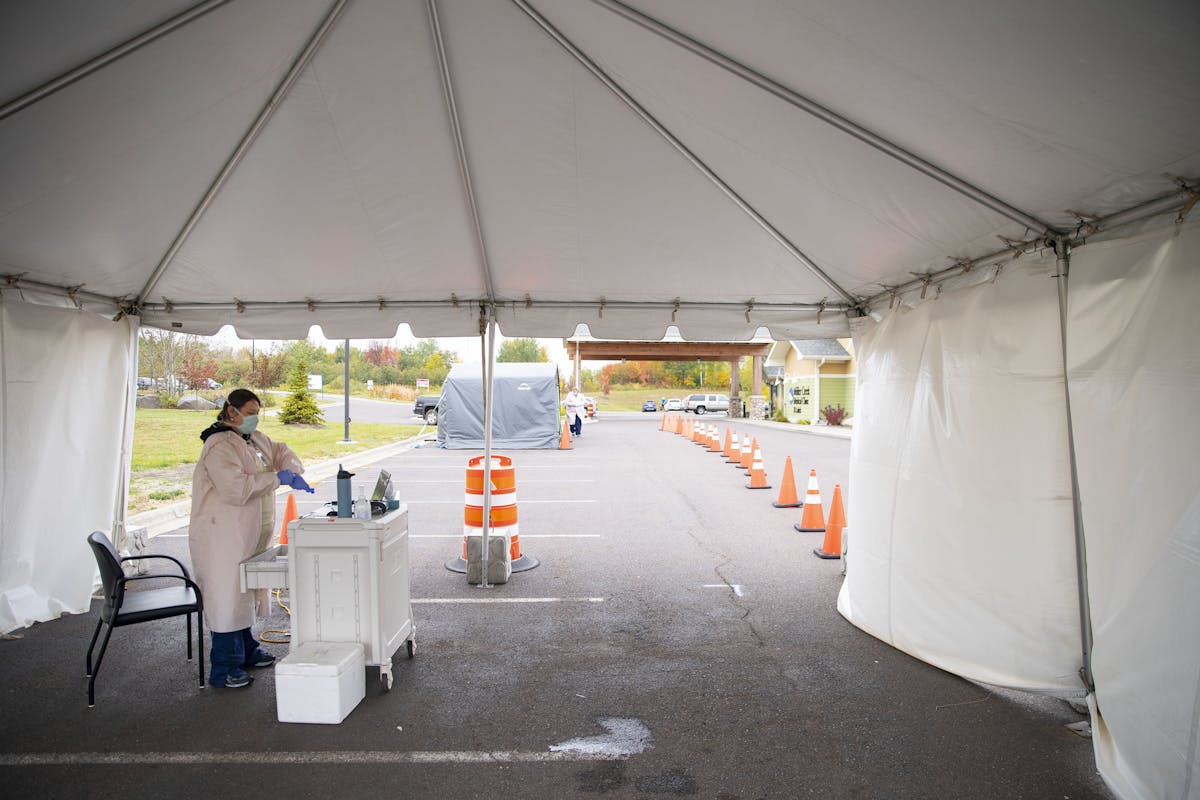A second peak of the COVID-19 pandemic in Minnesota is hitting a wider swath of the state than in the spring.
State health officials on Monday said the novel coronavirus that causes COVID-19 was centered earlier this year in the Twin Cities, long-term care facilities and large rural food-processing plants, but it's now spreading more broadly across Minnesota communities. The 1,178 infections reported Monday — a record fifth straight day of more than 1,000 infections — came from 69 of Minnesota's 87 counties.
"We are past seeing spread in those very focused places, and we are seeing it everywhere," said Kris Ehresmann, state infectious disease director. "That is what is very different."
Minnesota has reported a total of 113,439 lab-confirmed infections with the novel coronavirus and 2,144 deaths — including three fatalities reported Monday.
More confirmed cases are in part a function of more diagnostic tests — with an average of nearly 24,000 tests per day over the past week, state Health Commissioner Jan Malcolm said. Back on May 23, the state reported a spring peak of 847 confirmed COVID-19 cases, but a daily volume of only 8,500 tests. Testing resources were limited at the time, meaning many mild or asymptomatic cases may have been missed.
Even so, Malcolm said the spread of the virus appears much broader now as the state has been reporting outbreaks in settings ranging from weddings to restaurants to jails to colleges to community events. The positivity rate of diagnostic testing has remained at or above the "caution threshold" of 5% for 15 days, Malcolm said, and the growth in new cases outpaced the growth in tests performed last week.
"We are testing more, expecting to find more, and looking for it," Malcolm said. "So it's a good thing to be finding the cases that are out there, but we absolutely do believe that the prevalence of the virus is quite a bit more extensive now than it was."
Testing and contact tracing found three Minnesotans with COVID-19 who attended a Duluth rally on Sept. 30 for President Donald Trump — who later tested positive and was likely carrying the virus himself. However, two of the attendees lived together, making the rally an unlikely source of their infections.
Twelve infections have been found among participants of the Trump rally in Bemidji on Sept. 18, and another four were detected in people taking part in a counterprotest outside.
Hospital admissions for COVID-19 have been rising, including a single-day high of at least 92 Minnesotans admitted to hospitals, in or out of state, on Oct. 5.
Total new admissions reached 457 in the seven-day period ending Oct. 7. That is near the peak of 520 admissions in the seven-day period that ended May 22.
Hospital capacity in Minnesota stabilized over the weekend, though. The total number of COVID-19 patients in Minnesota hospital intensive care beds declined from 144 on Oct. 9 to 140 on Sunday, while COVID-19 patients in non-ICU beds declined from 322 to 306 in the same time frame.
Statewide, 71% of Minnesota's 1,439 immediately available ICU beds are filled with patients who have COVID-19 or other medical concerns.
While hospital admission numbers might be comparable, hospital care for COVID-19 has changed substantially since May.
Broader shipments of the antiviral remdesivir are now available for hospitalized patients, and the steroid dexamethasone has been proven to reduce deaths by preventing an overreaction by the immune system to the virus.
Earlier and improved oxygen support and airway management also have reduced the average length of stay for Minnesota's hospitalized COVID-19 patients.
Large group gatherings remain a significant concern, but Ehresmann said the pace of outbreaks in bars and restaurants has slowed as owners have adjusted to indoor mask-wearing and social distancing requirements.
The state has investigated reported outbreaks at 103 establishments since mid-June involving 2,226 workers or customers who tested positive for COVID-19. The state publicly identified 55 of those establishments because they had outbreaks of seven or more people.
Weddings, funerals, parties and other social events have been linked to another 1,936 known cases.
Gov. Tim Walz on Monday signed his seventh extension of the peacetime emergency order that has been in effect since mid-March and gives him broad powers to combat the pandemic. Every U.S. state has an emergency or disaster order in effect now, according to the National Governors Association — with Wisconsin Gov. Tony Evers issuing a new public health emergency declaration on Sept. 22 in response to rising spread of the virus.
Wisconsin has a new infection rate of 451 per million people per day, according to the COVID Exit Strategy tracking page, while the Dakotas have the nation's highest rates above 600. Minnesota's rate on that website is 214.
Malcolm urged mask-wearing, social distancing and staying home when sick to reduce the virus' spread.
"What we've seen happen in Wisconsin and literally pretty much every state around us is a cautionary example of how things can get even worse," Malcolm said, "when a state is seeing uncontrolled community transmission."

This St. Paul native now goes by Kandi Krush, and she body-slams her opponents in the ring

Baseball Metro Player of the Year packs up his five tools and leaves

Prep baseball 2024: 35 Minnesota stars who the recruiters covet
Police searching for St. Paul home intruder who raped, robbed woman

